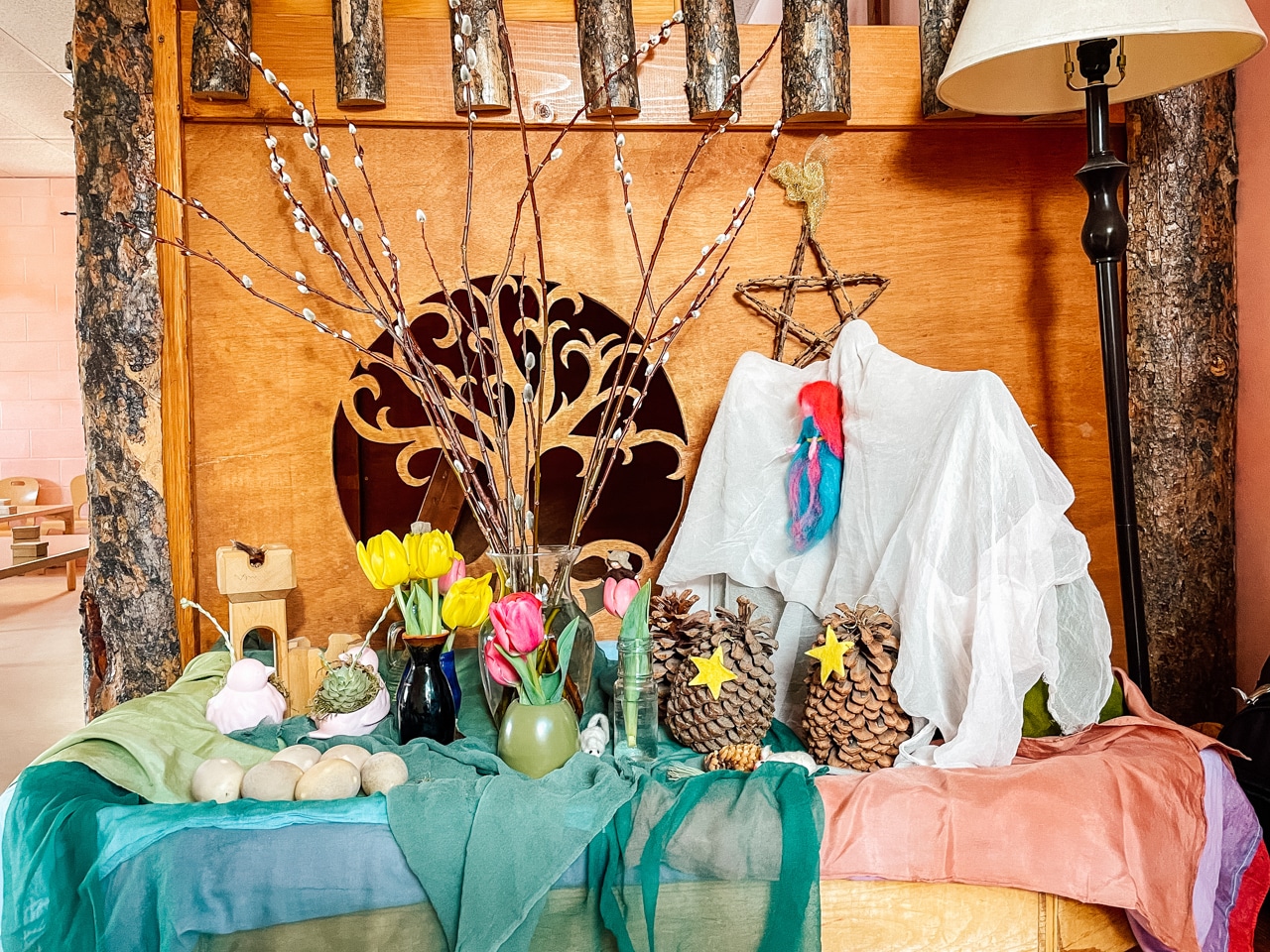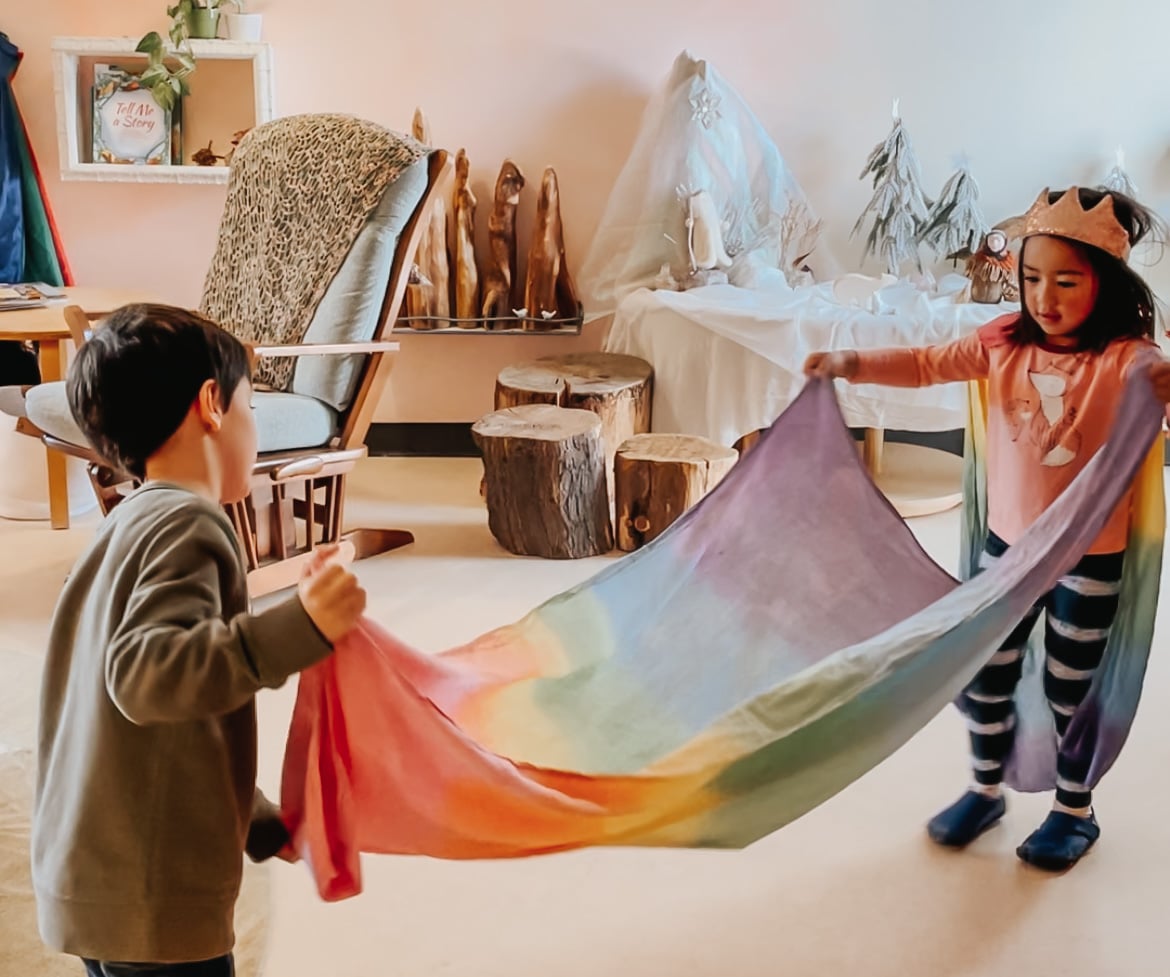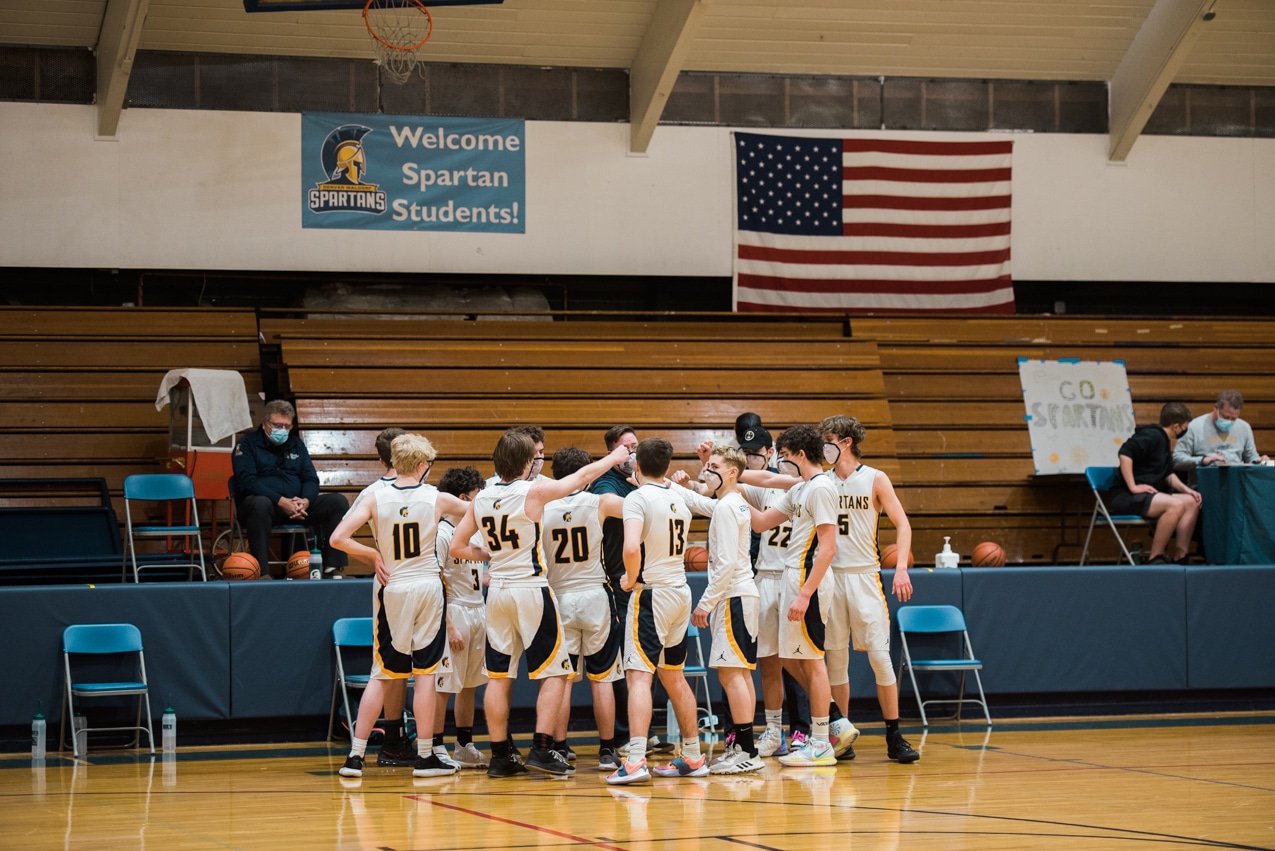Bringing Waldorf Into the Home
The depth and wisdom of the Waldorf educational movement extends beyond our classrooms here at The Denver Waldorf School. In subtle yet impactful ways, families can integrate Waldorf philosophies into their home lives as well. But what does it mean to bring Waldorf into your home?
It isn’t just about playsilks, beeswax, beautiful wooden toys, a proper supply of woolies, paper stars hanging from the windows, or the absence of an always-on television (although we do love all these). Rather, it is about creating a thoughtful home-life around the values that we most cherish.
In doing so, we create a sense of purpose, familiarity, and joy for our children. By ensuring our home life and school life complement each other, our children have a sense of security in knowing what to expect.
Here are a few ways to bring Waldorf into your day-to-day home life:
- Rhythm. Rhythm and consistency calm our children’s, and our, nervous systems, in turn creating more peace and less stress in our homes. Just ask a kindergartener what day it is and you’ll likely get the answer “bread day” or “soup day.” Establishing a daily, weekly and seasonal rhythm in our home creates a sense of stability for our children, as they know what to expect.
It isn’t a strict schedule to follow, where if we don’t stick to it we’ve failed. Instead, it’s a gentle way to guide us through our days. Just like when we breathe in and out, our days can reflect that same rhythm — the in-breath in which we embrace the quiet (for example, reading a story), followed by the out-breath in which we embrace the world around us (such as going for a walk around the block). Likewise, we can be intentional about doing the same thing on the same day of the week, such as laundry, going to the library, or other daily tasks which we can include our children.
Living into the seasons by taking the time to notice what is going on around us in the natural world —the first springs of green grass or new birds chirping — reminds us where we are in the world. We can create a little place where we invite nature into our homes to connect us to the world we share - a few pinecones in winter or treasures collected on a walk.
If you find you have no rhythm today, start with something very small — light a candle before dinner, take a walk around the block each morning, or sing the same song at bedtime.
- Simplicity. In a world that pushes us to fill our lives with more, we can find ourselves overwhelmed by the sheer enormity of the day ahead of us. Embracing simplicity, however, reminds us that we do not have to do “all the things, all at once.”
As parents we want the best for our children, and so understandably we feel an impulse to fill our children’s lives with ever-growing “enrichment” opportunities (be it music, sports, extra curriculars, and the list goes on and on). However, more is not always better; in fact, oftentimes, the practice of too-much-too-soon overwhelms our families and counteracts healthful growth and intellectual stimulation.
Allowing ourselves to slow down, simplify our days, and invite our children into everyday life helps center them and gives them a place within the family. Young children are eager to help prepare meals, wash dishes, do laundry, sweep the floor and many other daily tasks. When we include them in the act of caring for our environment, and doing it with intention, we are planting the seeds of compassion and care for the world all around us.
- Free, unstructured play in nature. Children’s lives, and our lives as parents, are often scheduled from the moment we wake up to the moment we go to bed. In our busy lives, sometimes we need to remember the power and importance of downtime and how important healthy free play is. Play is the job of children, it is how they make sense of the world around them. All of the impressions our children take in during the day – whether is it from screens, a simple trip to the grocery store, or a day at school — must be processed, and the way children make sense of what they have seen and done is through free, unstructured play. Ensuring we incorporate free play in nature every day allows our children to make sense of the world around them and keeps them from becoming overwhelmed. Nature is the easiest, and best, reset when our children, or we as parents, become overwhelmed.
By taking a few conscious steps to bring rhythm, simplicity, and play into our days we can create a home life that reflects our values and which translates into less anxious children and adults — leaving room for growth and a love for the world all around us.
The Role of Rhythm in Waldorf Education
Breathe in, breathe out. Look inwards, look outwards. Nourish the inner life, nourish the outer life. This is the rhythm of a Waldorf education.
Beginning in our early childhood programs and extending through the high school years, rhythm plays an integral role in our students’ lives. A predictable cycle of outbreaths and inbreaths allows our students to meet life’s challenges with confidence and to engage their senses fully in the tasks at hand. Rhythm inspires healthy habits, positive inward reflection, and enthusiastic exploration of the outside world.
So, how does DWS establish rhythm from an early age? We go about our days and weeks with a predictable routine that balances outbreaths with inbreaths, time to engage socially in the world, and time to reflect in the inner world.
For our younger students in the early childhood program, an outbreath can be expressed through a period of free play outside. With our teachers reflecting a loving presence, the children are free to play – to demonstrate their capabilities without direct guidance, to make sense and to make joy of the world in their own unique ways.
After this outbreath of play, the students return inside for an inbreath. The children may gather for circle time, for a story to be read, to hold onto their inner imaginations, to come together peacefully.
The outbreath returns for a walk outside – to feel the sun’s warmth, to watch the geese fly above Harvard Gulch Park, to just get those little legs and hearts pumping. During the colder winter months, the walk may be shorter but the rhythm remains. Circle time, followed by the walk.
When the students return inside after their walk, they enjoy warm tea together – quite literally feeling inner warmth return. The teacher may light a candle, narrowing their focus from all that is going on outside to that single point of warmth inside.
And so the day continues in our kindergartens – bread is baked, play is embraced, stories are told, songs are sung. A natural flow carries us from activity to activity.
There is also rhythm within our week. The children often know the days of the week by the dedicated snack or activity of the day - is it "soup day" or is it "oatmeal day?" There is predictability and consistency, which helps foster a sense of comfort and security within the children.
And this rhythm, this predictable balance, continues throughout the elementary, middle, and high school years. While the expressions of inward and outbreaths change with the students’ maturity, the importance of establishing a rhythm continues.
In fact, the ebbs and flows of a daily rhythm are crucial for the well-being of teachers and parents as well. Finding a comfortable rhythm helps us to remain centered and grounded when life becomes unpredictable. A daily rhythm can help us reset our focus and build our resolve.
Knowing how to breathe in deeply and exhale fully are life skills that stay with our students for all their years to come.
If you'd like to learn more about the importance of rhythm in early childhood, you can listen to our podcast with Clair Boswell, who leads our "Sweat Peas" parent-tot program.
Beyond the Classroom - Heeding the Call for Time Outside
When you ask parents about the happiest moments of their childhoods, you often hear stories about time spent outside — the family camping trip, the simple times in the backyard underneath the shade of an apple tree, the make-believe games that emerged in the outdoors, the sense of discovery and freedom while biking with friends, the awe of laying beneath a night sky replete with stars.
At an intuitive level, we all understand that kids need time outside, and that kids can learn so much while outdoors. Nevertheless, we are living through an era in which too few kids have sufficient time outdoors.
Fortunately, this trend of short-changing time outside is beginning to change. In the September edition of Outside Magazine, Emily Sohn chronicles this shift in Classrooms Without Walls. She notes that “a movement to ensure students receive ample outside time has been ramping up, a rare positive side to the pandemic.”
As the pandemic pushed many aspects of life outside, educators began to re-emphasize the outdoors — embracing school gardens, the joy of recess, and myriad learning opportunities that only the outdoors can offer. Jeanne McCarty, the CEO of Out Teach, a nonprofit that trains teachers how to offer experiential lessons outdoors, notes: “More than ever before, there’s an appetite to reimagine learning, and outdoor instruction can be a key component of that.”
At The Denver Waldorf School, we have always understood that a connection to nature is foundational to our learning as we cultivate a love for the world around us. We lean into the wisdom of time spent outside, and we embrace the learning opportunities, the growth, and the discovery that the outdoors provide.
It may seem odd that an urban school in a rapidly growing city would nurture a strong connection to the great outdoors, but that is precisely what we do — nurture connections to all that is beautiful and good within nature. And thankfully, there are many parks, gardens, and gulches that surround our urban campus as well as mountains, rivers, forests, and spaces beyond!
Whether it's our 3rd graders working their hands in the school plots at the Rosedale Community Garden, the 12th graders doing plein air painting in Harvard Gulch, or the 5th graders studying the living world through botany - our lessons often extend beyond our physical classrooms on an everyday basis.
On special class field trips, you can find our younger grades exploring a state park, or experiencing their first camping trip together. Our annual class trips for our older grades are a beloved aspect of our education – whether it's a week-long river trip or a field trip to the farm, class trips provide the opportunity to deepen our relationship with nature and one another - allowing plenty of time for exploration as well as service!
And of course we make plenty of room for play during outdoor recess in all seasons! Free play in the outdoors is a breath out for our students after taking in an academic lesson - giving room for movement to keep our students engaged and ready to learn.
We are always grateful to be able to soak in the many benefits that nature provides for social, emotional, physical, and academic development.
Waldorf Window Stars
How to Make Waldorf Window Stars
Truth, beauty and goodness are core tenets of Waldorf education. We surround ourselves with wonder and beauty to awaken our spirits and inspire our learning. There is a movement to display rainbows- which symbolize peace and serenity, hope and promise- in our windows at home to bring light and connection to all who walk by. Waldorf window stars have long been a favorite way to brighten our classrooms and homes, and in rainbow colors, we love how they contribute to the optimism of this movement. This is an activity that can be shared easily with little hands to bring happiness to our homes and community! Below we share this simple Waldorf window star tutorial with your families.

Materials
– Kite paper
– Glue stick or glue
– Scissors or paper cutter (if you need to resize your kite paper)
Instructions
Step 1.
Resize your kite paper if needed. The paper we used was 6.3″ x 6.3″, and we cut it into quarters so that we could make smaller stars to fit our window space.
Step 2.
Arrange your prepared pieces of paper in the order that you want your star points to be- you will have eight points, so you need eight pieces of paper!

Step 3.
Fold your first square in half

Step 4.
With your paper still folded in half, fold in half again

Step 5.
Open up your paper completely, and then fold one corner into the middle

Step 6.
Repeat step 5 with each remaining corner

Step 7.
Fold in two sides so they meet in a straight line at the center

Step 8.
Repeat steps 3 through 7 for remaining papers
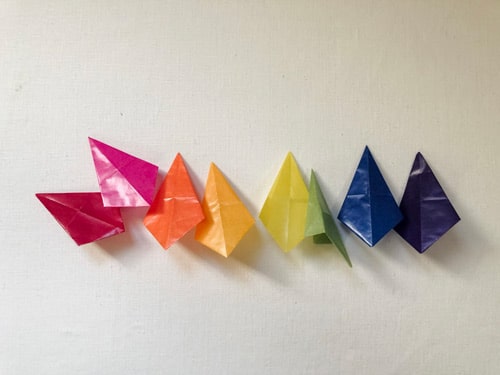
Step 9.
Begin gluing your star points together

Step 10.
Continue working around your star, gluing each at the center

Step 11.
Make sure your star is dry, and then hang it in your window to spread beauty, light, and love!

Why We All Play
How do we develop confident, creative, and joyful student-athletes who champion teamwork, participation, and growth? That is the question that drives our athletics program at The Denver Waldorf School.
This ethos begins with a simple no-cut commitment: any DWS student who wishes to play a sport will have that chance. Whether it’s cross country, volleyball, basketball, or ultimate frisbee, our coaches embrace the opportunity to help each and every student grow and develop their talents and work ethic.
Too often, however, youth athletics are plagued by a very different ethos—one that values that domination, recognition, and exclusivity above all else. In Beyond Winning, Waldorf educator and author, Kim John Payne, laid bare the pitfalls of this mindset:
“[T]he obsession with early success in a win-at-all costs culture has created a pressure chamber in which top prospects, even at the age of five or six, are funneled into elite programs while the majority of kids . . . are robbed of the opportunity to discover and develop their talents . . . The result is a youth sports landscape pockmarked with children who end up—at age eleven or twelve—with fractured egos, low self-esteem, and, in some cases, severe physical injuries. It’s why millions of American kids quit organized sports just as they become teenagers.”– Kim John Payne, Luis Fernando Llosa & Scott Lancaster, Beyond Winning: Smart Parenting in a Toxic Sports Environment (2013).
As a school committed to developing the whole child (head, heart, and hands), we believe athletics should boost our students’ understanding of self-worth, increase their self-esteem, and promote health and wellbeing. In short, we believe physical activity through sports is an opportunity for healthful growth.
It’s also the smart tactic to nurture joyful love of sport. As Payne points out, almost three-quarters of America’s youth quit organized sports by age thirteen — precisely at the age when sports can be taken more seriously and occupy a more central role in healthy development.
Imagine a sports culture where our teenage athletes experience joy instead of burnout, embrace team success over individual glory, and value participation over exclusion. By creating a healthy sports culture within DWS, we make these goals into our reality.
We create a culture that nourishes the hearts, souls, bodies, and minds of every student-athlete. It begins with a commitment to let everyone participate, and this is why we all play.
Star Wand Tutorial

As part of our Winter Fair at Home this past holiday season, many of our families were able to experience the joy of the children’s activities together at home with our assembled craft kits. One of our much loved craft activities was a star wand, and today we are sharing a variation that you can make with materials you likely already have at home. We used some scrap fabric, felt, and used holiday ribbons making it a perfect upcycled project too.
The satisfaction of making and crafting by hand has always played an important role in our Waldorf curriculum. Stitch by stitch, we learn to appreciate the materials, the process, and the capabilities of our own creativity. We develop patience, fine motor skills, and confidence. And with this star wand, we bring a touch of magic to our days! Enjoy.
Materials
– wooden stick or dowel
– scrap fabric for one side of star
– felt for other side of star
– ribbons
– embroidery thread or thin yarn
– wool roving or scrap fabric for stuffing (optional)
– hot glue

Instructions
Step 1. Trace the 3″ star pattern (or make your own!) onto the scrap fabric and felt.
Step 2. Cut stars out and stack together.
Step 3. Knot one end of thread and begin stitching the stars together at the bottom (we used blanket stitch).


Step 4. When stitched 3/4 of the way…pause. Add wool roving as stuffing (optional), and place end of ribbons into star. Continue stitching so that ribbons are sewn into star.

Step 5. Stop stitching just before you meet where you began, leaving a small hole for the wooden stick or dowel. Tie thread off securely and sew end of thread inside of star.

Step 6. Add a small amount of glue inside of star and place the end of the wooden stick into star. Press star around wooden stick to secure.

Step 7. Make all the magic!

Developing the Vestibular Sense
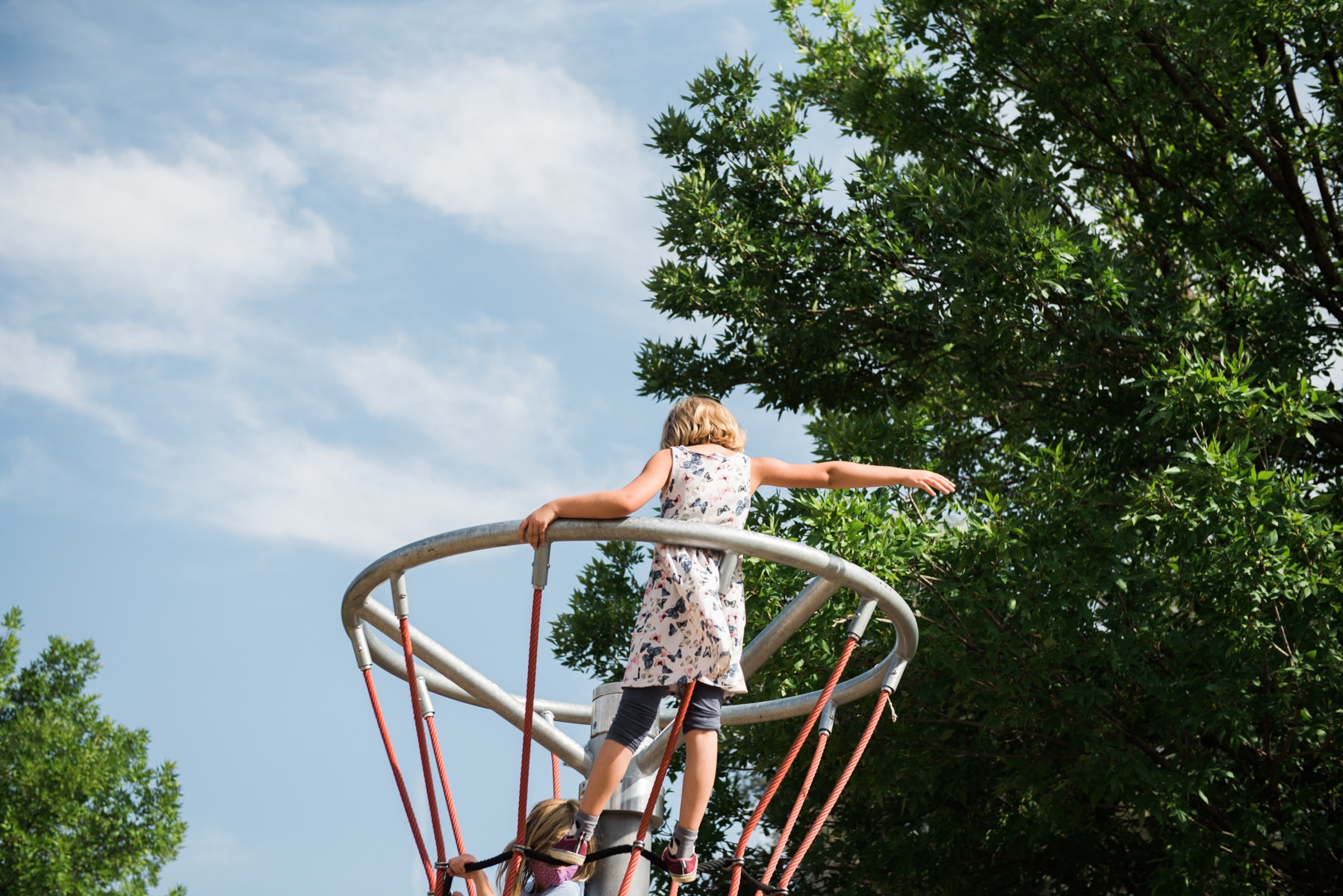
Children love to play. They swing, spin, somersault, and move every way they can. This isn’t just coincidence that when we allow the space and freedom to play, children will gravitate towards these experiences. These movements and activities all work to strengthen their vestibular sense- the balance sense.
This vestibular sense tells us where we are in relation to the earth and its gravity. The vestibular sensory organs – the semicircular canals – are located in the inner ear. Movement of the head in any and all directions stimulates the fluid in these chambers, informing our brains of our body position in relation to all that is around us. As children are able to move about, engaging their vestibular sense, they are developing and strengthening this ever important sense of balance.
However, it has to do with even more though than just balance. As our own Nancy Blanning and Laurie Clark have noted in their article Strengthening the Foundational Senses of the Young Child, “The importance of this sense of balance cannot be overemphasized. It is a unifying element in the whole system and seems to prime the entire nervous system to function properly.” The healthy development of the foundational senses in the young child serves as the strong roots for all higher level learning- both in childhood and throughout life. As Nancy and Laurie have noted, “When the foundational senses are functioning well, the child has pleasure and joy in being within his/her body. He moves in a balanced, coordinated, integrated way. He is eager to explore the world and new sensory experiences, and is not timid. The child is well-balanced, both literally and metaphorically.”
Our daily activities during our time together at The Denver Waldorf School aim to strengthen the vestibular sense, and all of our primary senses. The emphasis on the importance of free play, the movement and rhythmic games incorporated into our learning, and the exploration of nature and the outdoors, no matter the weather, are all intentional building blocks to giving our children a strong foundation for their healthy development.
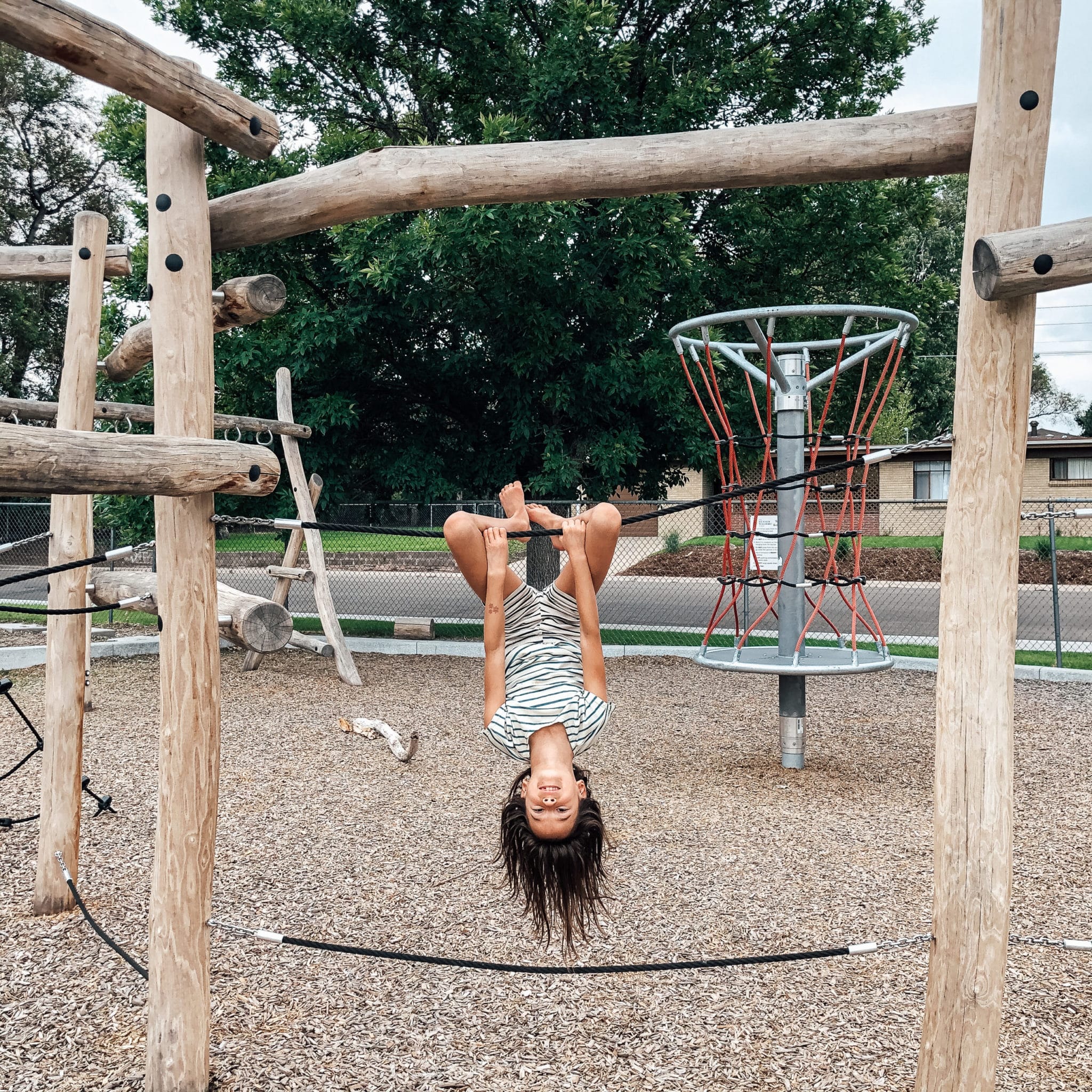
Range

Artwork by Class of 2020 graduate Bryn Creager
How do we ensure that our children, our students, are prepared to succeed in a rapidly evolving world? That question inspires Waldorf educators across the world.
In response to this question, parents are often fed a persistent message: If you want your child to succeed in an endeavor later in life, then you must specialize early in life. Be it sports, music, art or literature, the ticket to adulthood success is childhood grit and singular focus—or so we are told.
In the book Range: Why Generalists Triumph in a Specialized World, David Epstein explores whether intense early specialization benefits children and adults alike. He finds that early specialization is the outlier, not the norm, when it comes to producing elite talents into adulthood.
After a deep-dive into a growing body of research, Range reveals that the most successful musicians, athletes, scholars and entrepreneurs have embraced and benefited from a range of interests and activities during their youth. When it comes to athletics, for example, Epstein finds:
“Eventual elites typically devote less time early on to deliberate practice in the activity in which they will eventually become experts. Instead, they undergo what researchers call a ‘sampling period.’ They play a variety of sports, usually in an unstructured or lightly structured environment; they gain a range of physical proficiencies from which they can draw; they learn about their abilities and proclivities; and only later do they focus in and ramp up technical practice in one area.”
These findings are also reflected in Kim John Payne’s book Beyond Winning: Parenting in a Toxic Sports Environment. As in Range, he finds that the most successful adult athletes benefited immeasurably from childhood free-play and thus avoided the onset of teenage sports burnout brought on by too much intense work too soon.
And it’s not just sports. Range chronicles business leaders who succeeded because of their diverse experiences and interests, not in spite of them; musicians like Yo-Yo Ma who played several instruments before settling upon his famed cello; and artists like Van Gogh who found a true calling later in life. What we need in this ever-changing world, Range asserts, is “people who start broad and embrace diverse experiences and perspectives while they progress.”
Waldorf education has always understood this critical truth. Offering a liberal arts K-12 curriculum, Waldorf education challenges its students to embrace, learn and grow from multiple disciplines—from literature to math and science to arts to theater to athletics to music and beyond. Art is integrated into our main lessons, each student is encouraged to participate in our sports teams—there are no cuts or tryouts, each grade works together to produce a play, we join our musical natures in orchestra. Our students are pushed to explore this “sampling period” in the development of their whole selves.
As students progress at The Denver Waldorf School, they may gravitate toward a more singular focus. For example, for their senior projects, students may intensely focus on a single endeavor—such as pursuing a pilot’s license, researching homelessness in Denver and producing a podcast, or training to become an Emergency Medical Technician. Whatever they choose to focus on, they never shy away from embracing a broad range of talents, skills and interests.
Through this liberal arts education, our students are not just prepared for college; they are prepared to make meaningful and deep contributions to the world — well beyond their first job.
A Waldorf education is the first step in this journey. In a world that will change many times over after they graduate, our students build a solid foundation to meet the challenges and opportunities for all of their days ahead.
In a word, they have range.
Bringing Waldorf into the Home
There’s no time like the present to revisit the wisdom shared by two DWS moms, Clair Boswell and Bridget Hand, on how to bring Waldorf into home life. During our September parent council meeting, they presented many ideas for establishing an in and out breathing rhythm throughout the day and through the seasons. Establishing a rhythm in our homes gives a sense of security and provides for healthy activity for our children. With suggestions for practical activities and resources to connect as a family and with nature, their presentation is worth revisiting below.
Waldorf in the Home Handout
Audio Recording of Presentation of Waldorf in the Home

Success in Sports
“Success is the peace of mind which is a direct result of self-satisfaction in knowing you did your best to become the best you are capable of becoming.” – John Wooden, Hall of Fame basketball coach and sports philosopher.
Coach John Wooden won ten NCAA basketball championships and yet, he famously never urged his players to win. Instead, he focused on improving skills, cultivating teamwork and instilling a championship spirit in every practice and every game. He helped his players become the best they were capable of becoming.
In a way, Waldorf athletics follows the John Wooden philosophy of sports. In a youth sports culture dominated by a win-at-all-costs mantra, Waldorf recognizes that its student-athletes have embarked upon a journey of growth and development that supersedes wins and losses. Waldorf’s coaches seek to develop the whole athlete by valuing growth in individual skills, championing teamwork and emphasizing the joy of sport.
Winning is a byproduct of doing things the right way. A loss is, not a failure, but an opportunity to learn. Waldorf’s student-athletes meet victory and defeat with equanimity and grace—traits that will serve them well in the broader world, on and off the athletic field.
An example of this broader movement is Norway- it has adopted the Children’s Rights in Sport charter which focuses on the “joy of sport for all” while forbidding excessive training and even scorekeeping before age 11. Norway’s charter simply states, “Children are engaged in sports because they enjoy it. Together with their friends they have experiences and learn lessons that will last them a lifetime. This is the foundation that all coaches, managers and parents must safeguard and develop further.”
Youth sports should not be adult-centered endeavors with an intense focus on winning at all costs. An emerging body of research suggests that, not only is the adultification of youth sports detrimental to young athletes’ happiness and well-being, but also may derail their long-term success—that is, their ability to become the best they are capable of becoming. Let them play, and enjoy the success along the way!
1st Team – Aly Sakho
2nd Team – Dylan Quinn
Honorable Mention – Wil McHenry
Coach of the Year – Michael Quinn


